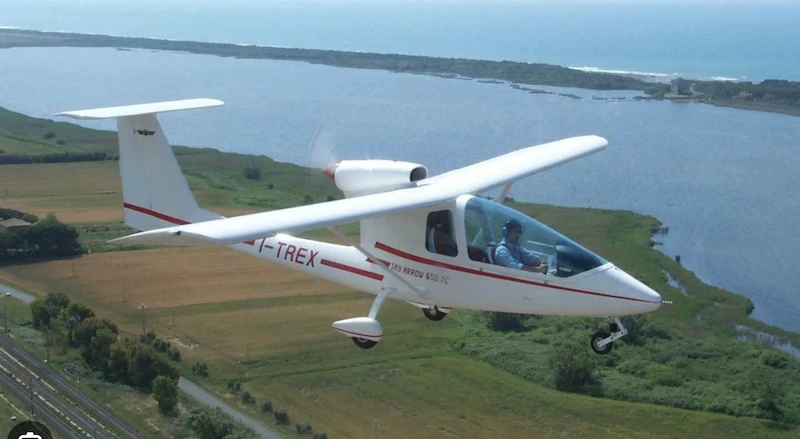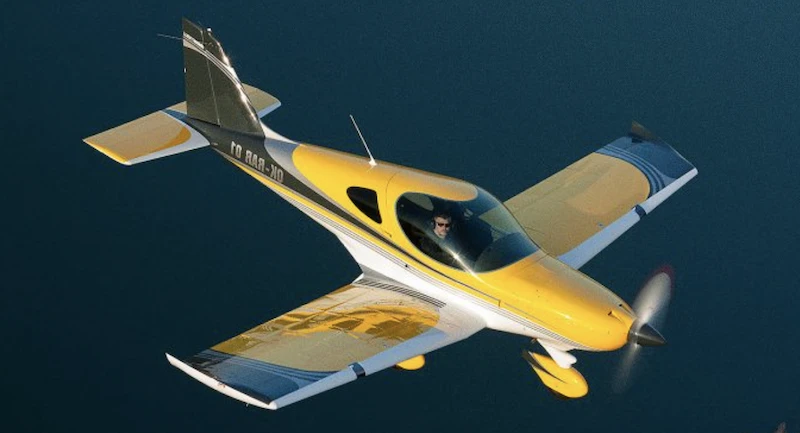Microlight aircraft, also known as ultralights, are a type of aeroplane that offer a thrilling way to experience the joy of flight. These lightweight, manoeuvrable aircraft have gained popularity among aviation enthusiasts and recreational pilots.
In this article, we will delve into the different types of microlight aircraft, their characteristics, and what makes them so popular.
Fixed-Wing Microlights
Fixed-wing microlights are the most common type of microlight aircraft. These aircraft are characterised by their fixed rigid wings with flaps and ailerons, similar to conventional airplanes.
They usually seat 2 persons and have a single front propelled engine, and are further classified into three subtypes:
- high-wing microlights
- low-wing microlights
- flex-wing microlights
High-Wing Microlights
With their wings mounted on the upper part of the fuselage, they offer exceptional visibility from the cockpit. This positioning grants pilots an unobstructed view of the surrounding landscape, enhancing situational awareness during flight.

Furthermore, high-wing microlights are renowned for their stability, making them an ideal choice for novice pilots. The configuration of the wings above the fuselage contributes to inherent stability, reducing roll and providing a smoother flying experience. These factors combine to create a favourable and comfortable flying environment, particularly suited for beginners venturing into the world of microlight aviation.
Low-Wing Microlights
In contrast to high-wing microlights, low-wing microlights feature wings attached to the lower part of the fuselage, which grants them distinct advantages. The positioning of the wings offers enhanced manoeuvrability and agility during flight, allowing pilots to perform tight turns and execute precise control inputs.

Additionally, the lower wing placement contributes to increased speed potential, as it reduces aerodynamic drag and improves the overall efficiency of the aircraft. These characteristics make low-wing microlights a preferred choice for pilots seeking exhilarating performance and the ability to push the boundaries of their flying abilities.
Flex-Wing Microlights
Flex-wing microlights, commonly referred to as weight-shift control microlights, present a unique and exciting flying experience. These aircraft feature a wing suspended by a flexible structure where pilots control the direction of the aircraft by shifting their body weight. By leaning or shifting their body in the desired direction, pilots initiate precise turns and banking movements.

This intuitive and interactive control method gives pilots and passengers a sense of direct connection with the aircraft, enhancing the feeling of freedom and adventure in the sky. This is precisely why we use these aircraft at Victoria Falls!
Gyrocopters
Gyrocopters, also known as autogyros, are unique microlight aircraft that combine features of helicopters and fixed-wing aircraft. The aircraft is fitted with a cylinder boxer engine at the rear, and this engine simply produces forward thrust.
It also has top rotor wings like a helicopter, but unlike helicopters, these are unpowered rotors that rely on the forward motion of the aircraft to generate lift. The main advantage of gyrocopters is their short takeoff and landing capabilities. This makes them suitable for operating in smaller spaces. However, they typically have lower speeds compared to fixed-wing microlights.
Electric Microlights
Electric microlights have emerged as an environmentally friendly and sustainable alternative to their traditional counterparts, thanks to technological advancements. These aircraft utilise electric motors and batteries as their power source, resulting in reduced environmental impact.

Electric microlights excel in providing quieter flights and smoother operations, making them an ideal choice for recreational flying in noise-sensitive areas. Moreover, they offer economic advantages with lower operating costs and reduced dependency on fossil fuels. The ongoing advancements in battery technology are further enhancing the range and performance of electric microlights, opening up new possibilities and promising a bright future for aviation with cleaner and greener alternatives.
Author’s Closing Comments
Microlight aircraft provide an exhilarating and accessible way to take to the skies. With their lightweight design and versatility, they offer pilots a unique flying experience.
From fixed-wing microlights to weight-shift control microlights and gyrocopters, each type has its own characteristics and advantages. The emergence of electric microlights adds a sustainable and eco-friendly dimension to the field. However, it is crucial to prioritise safety through proper training, maintenance, and adherence to regulations.
With advancements in technology and a thriving industry, the world of microlight aircraft continues to evolve, promising exciting possibilities for aviation enthusiasts and adventurers alike. So, if you’re ready to soar through the clouds and experience the freedom of flight, microlight aircraft are waiting to take you on an unforgettable journey.
Interesting Facts and Stats
- Microlights are typically smaller than other types of aircraft designed to be easy to fly and maintain.
- Microlight aircrafts are typically classified as either single-seat or two-seat aircraft.
- Fixed-wing microlights are the most popular type, accounting for around 70% of all microlights in use.
- Flex-wing are the second most popular, accounting for around 20% of all microlights in use.
- The average fuel efficiency of a microlight aircraft is around 15 miles per gallon.
